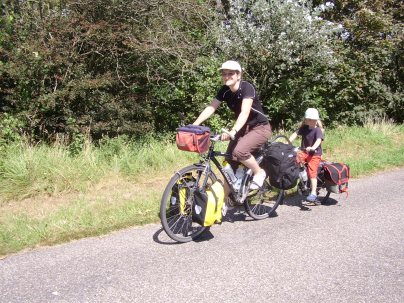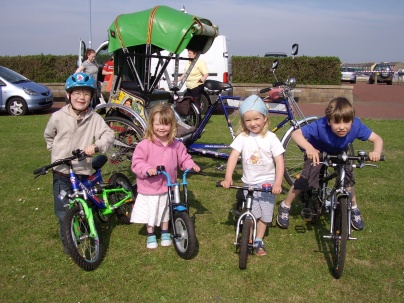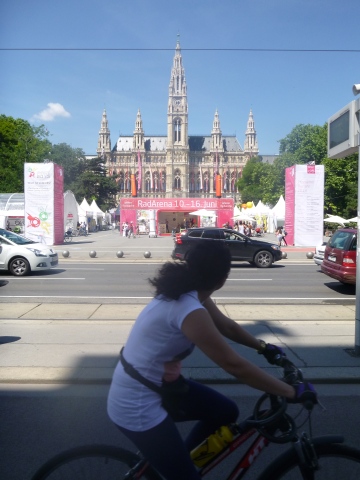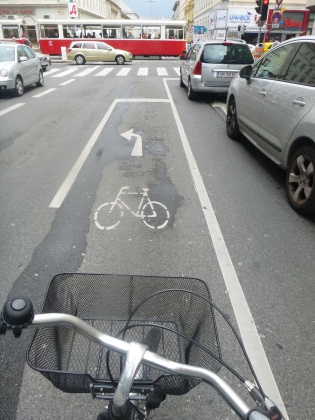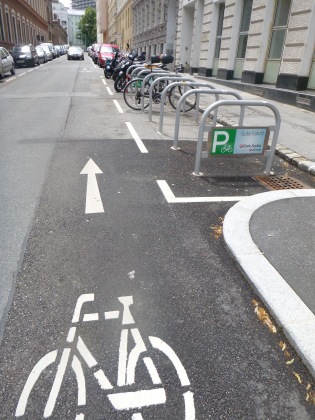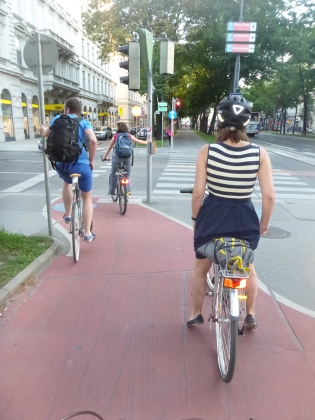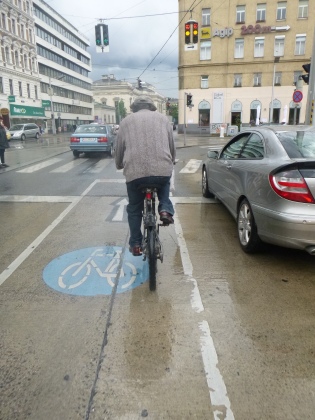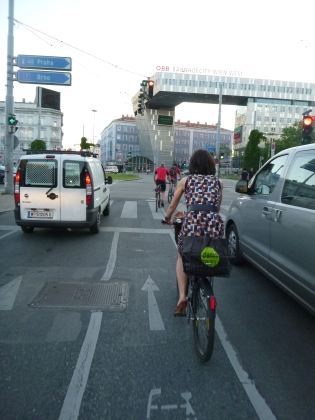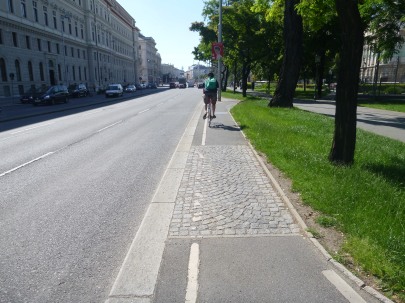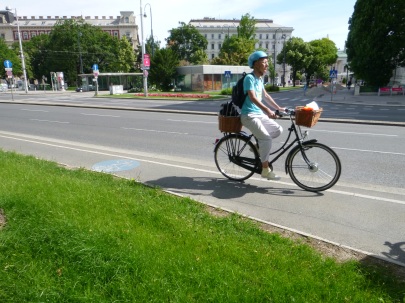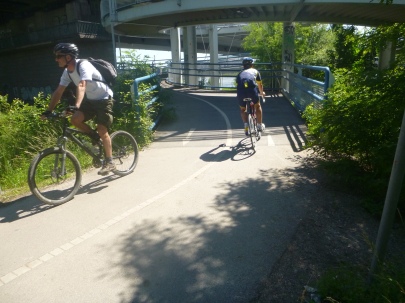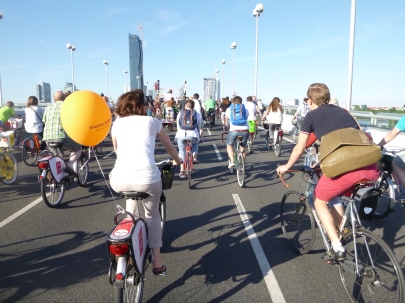I’m posting below the review of City Cycling, edited by John Pucher and Ralph Buehler, I wrote earlier this year for the journal World Transport Policy and Practice. It’s long but hopefully of interest to those concerned about prospects for city cycling across the world; and the more people who read and think about, and then act on these issues, the better.

A tricky balance must be struck in thinking about cycling’s prospects as an ordinary mode of urban transport. On the one hand, it’s good not to be all doom-and-gloom, but to offer hope that the urban world should and could make most of its daily trips beyond walking length by bicycle. But on the other hand it’s important to emphasize that cycling as a mass mode of planetary mobility isn’t inevitable and that making it happen requires ambition, commitment and work. Overall, this book gets that balance right. Sure, there’s easy talk of ‘cycling’s renaissance’ across cities such as London, Paris and New York, talk which seems premature, too uncritical and rather naïve. But then it’s more important to show things can change, even if they’re changing far too slowly, than to lose hope that cycling will ever effectively be centred in our political institutions, towns, cities, and everyday lives.
No one has done more than John Pucher and Ralph Buehler to popularise the cause and possibility of city cycling, using what is elsewhere to advocate what could be at home – in north America, but also Australia, New Zealand and the UK. Over the past decade and more, Pucher and Buehler have argued that the English-speaking world should follow the Netherlands, Denmark and Germany in becoming cycle-friendly; and they have investigated and shown how it can be done. City Cycling continues this project in an impressive way. It’s academic, drawing together an international, cross-disciplinary collection of researchers who set out what needs to change for cycling to become mainstream; but it’s unquestionably advocacy too. The case for cycling has already been made but it needs making again and again, and it is made persuasively here. It is glib but true to say that if every politician, policy-maker and practitioner with any responsibility for the organisation of urban life read and acted on this book, we could move rapidly and radically towards a socially and environmentally much brighter future.
Overall the book argues for cycling to be systematically embedded into global economy and society in the same way as driving a car has over the past half-century been systematically embedded within north American, Australian and much of European economy and society. Of course this ‘centering’ of cycling must be at the car’s expense, and here it sometimes feels like the ambition of City Cycling’s lead editor and chief contributor, Professor Pucher, is ahead of the book’s other contributors. For example, there is some but on the whole too little interrogation of the role of the car’s continuing dominance – ideologically, structurally, spatially – in impeding cycling. Cycling visions, strategies and actions never take place in a vacuum; they emerge from and are shaped by the context of car domination. Much current action in the name of cycling – because it is insufficient for the job of mainstreaming cycling – therefore risks merely perpetuating cycling as a marginal mode of mobility and cyclists as a sub-cultural ‘out-group’. Minor support for cycling reproduces cycling as a minority mode, and isn’t good enough. Only major resource re-allocation away from the car and towards the bicycle can break cycling out from its current marginalisation at the car’s expense. The better chapters here make clear that cycling thrives in places where driving is not just ‘civilised’ but more importantly deterred.
But there’s no ‘magic bullet’. City Cycling argues effectively that consistent, coherent support for cycling across all sectors of society is required in order to develop a bicycle system which makes cycling, not driving, the obvious mode of short-distance urban travel. Countries such as the Netherlands, Denmark and Germany are well advanced over north America and Australia in every important respect – from allocation of transport spending on cycling, to development of cycling infrastructure, to land use and planning rules, to driver awareness and cycling education.
Nevertheless and for good reason, issues of infrastructure loom large. It now seems evident to the point of obviousness that new city cycling cannot be produced without the provision of a dedicated network of cycling routes of a quality sufficient to appeal to everyone. Pucher and Buehler’s previous research demonstrates this as the key difference between countries with high and low levels of cycling. So whilst its message is undoubtedly broader, City Cycling’s biggest impact might be in pushing us closer to consensus (a consensus which is I think established across the scientific community, but lagging across advocacy) that the two main means of mainstreaming cycling are infrastructural; first, the taming of motorised traffic to speeds which make cycling plausible even for those (the vast majority of people) nervous about sharing space with it; and second, wherever that is not (for transient reasons of political will) done (most likely on bigger and busier roads) cycling’s separation from and prioritisation over motorised traffic.
Whilst the contrasts between cycle-friendly northern Europe and car-centric Anglophone countries seem to cry out for strong critique of the latter, the book is unfailingly polite in tone. Given its intended readership needs to be persuaded rather than offended, this is probably good diplomacy. It does sometimes feel, though, that the passion which surely animates advocacy of more cycling – and which helps explain that advocacy – has gone AWOL. So one cost of diplomacy is a certain tediousness in both description (“the Netherlands is like this, the US is like this …”) and analysis (“the Dutch prioritise cycling, but north Americans don’t …”). The book’s impetus to convince more than explain also leaves some questions unasked (“But why do the Dutch prioritise cycling, whilst north Americans don’t? What are the ideological and institutional blocks and barriers, and how might they be overcome?”). For similarly understandable reasons the book is generally upbeat (“look how cycling is growing, and look how easy it is to grow it faster!”), yet we know this is only one side of the story. There are certainly good news stories, but let us not be blind to the fact that across most of the world levels of cycling are either negligible and static, or else quite high but rapidly declining (and in those places cycling needs rescuing, not promoting).
City Cycling belongs to an emerging paradigm shift, from a paradigm that sees cities built for and around the car, towards one which sees cars as inappropriate and bicycles as far more appropriate vehicles for cities. There’s material useful to this transition here. It’s good to see Kristin Lovejoy and Susan Handy’s exploration of cycles and cycle accessories, for example. We know that many bicycles are not really fit for the purpose of city cycling, and it’s refreshing to see that recognised. Also good are three chapters exploring cycling in different sized cities – the small, medium and mega. Cycling is sometimes dismissed by critics as more appropriate to smaller than to bigger cities, whose populations (they say) should travel by transit not bike. So it’s a neat bit of advocacy as well as analysis to break cities down by size, and discuss prospects and strategies for cycling at each scale.
The most fascinating glimpse into cycling is provided by the penultimate chapter exploring cycling in four ‘mega cities’, London, New York, Paris and Tokyo. The first three have seen much pro-cycling hype (and sometimes hysteria) and large increases in cycling, albeit from very low bases. In contrast cycling in Tokyo seems prey to benign neglect, yet it’s by far the most successful ‘cycling mega city’, with relatively high modal share (16.5% of all trips we are told), demographically relatively evenly spread. This chapter correspondingly begs the more detailed kind of cultural investigation which is necessarily absent from the book, but which is nonetheless well worth pursuing. One of the book’s big policy pushes is towards dedicated cycling infrastructure, something now being pursued in London, Paris and New York but not Tokyo. So that using Tokyo as a model of best practice in this chapter might almost undermine the main advocacy push of the book as a whole. (It would be a shame, but unsurprising, if the case of Tokyo were used by opponents of dedicated cycling infrastructure.)
Tokyo’s apparent ‘success’ suggests the importance of closer study of how cycling is actually practised – how do people cycle there? How fast do they tend to go? We know quite a lot about cycling policy and practice in north America, Australia and Europe, but what about cycling policies and practices elsewhere, including Japan about which it seems we know too little? Furthermore the book is silent on the two countries which arguably matter most for the future both of city cycling and our planet – China and India. That’s fair enough – City Cycling makes no claims to inclusivity or universality. But the more global perspective which the case of Tokyo provokes raises potentially disturbing questions; ‘just what is cycling?’; and ‘what do we want it to become?’.
City Cycling’s desire to persuade more than explain is both its biggest strength and its greatest shortcoming. Thus my hope is that it’ll be read more by people who need persuading of the case for cycling than those seeking to understand it. But even were that to be the case, I have some concerns. In its rush to show how cycling’s promotion is compatible with a range of bureaucratic policies, and how inserting cycling effectively into the city is mainly about technocratic expertise and practice, there’s an evacuation of politics from City Cycling. There are two elements to this evacuation of the political: first, it prevents the book asking some tough questions (to do with continuing neo-liberal capitalism) about why cycling continues to be so marginalised despite it making so much sense; and second, what disappears from most chapters is what I would assume is the authors’ beliefs in the bicycle’s capacity to make the world a better place.
To finish let’s look briefly at each of these in turn.
First, if cycling is so good, why aren’t we all cycling yet? If the arguments are so strong and persuasive, what’s stopping us? Answering such questions requires political, economic, social and cultural analyses both of continuing car (and oil) dependency and of cycling’s continuing marginality. Across the USA, Australia and UK it remains the case that the advocacy of cycling is tolerated, and demands for greater investments in cycling are granted, only so long as they don’t threaten the car’s centrality to everyday life and/or they fit with emergent neo-liberal discourses around livable (for the white, affluent, middle-classes) cities. So only outrageous, extraordinary demands for cycling – demands which test the limits of the car system – have hope of breaking us (even cycling’s advocates) out of unwittingly reproducing cycling’s marginality. Until we learn to do this, mass city cycling – cycling as the main vehicular means of urban transport – remains a pipe-dream.
Second, should cycling promotion become a technocratic exercise, simply about inserting more cycling into the city-as-it-is for the latest, most fashionable set of policy reasons? Is cycling’s main contribution to make our bodies, businesses, streets and economies more ‘effective’ and efficient? Is more cycling enough, or do we want something more? I don’t know about you, but I want something more. Cycling, and thus the bicycle, is not ‘merely’ a bureaucratic and technocratic insertion into the city as it is, with all its injustices and inequalities (to do with class, gender, race, age, ability, locality and so on). Cycling, and thus the bicycle, is also potentially, at least in part, a disruption to that city, and so something which enables the city to be re-made in more socially and ecologically just ways. So demands for city cycling should not only be ridiculously bold but also unapologetically critical. Who are we encouraging to cycle? White, male, middle-aged commuters? Not good enough! What about – for example – kids, people who need to ride wider-than-average machines specifically adapted to their needs, people travelling as a group (who’ve every right to travel as sociably as people within a car)? I think people advocate for cycling because they recognise its capacity to improve the world in a strong, qualitative way; I agree; and I think that we shouldn’t sell either ourselves or cycling short.
All this is perhaps less a criticism of the book than a critique of what cycling might become if left purely to the work of books such as this. This book is important, but it’s not enough. It can form only part of a broader struggle. City Cycling should push city cycling, and is to be very highly commended for that, but it raises more questions than it answers for future cycling research. This is no bad thing; cycling research, much like cycling advocacy, is part of the cycling system we need to establish and maintain in order to first make and then keep cycling normal.







